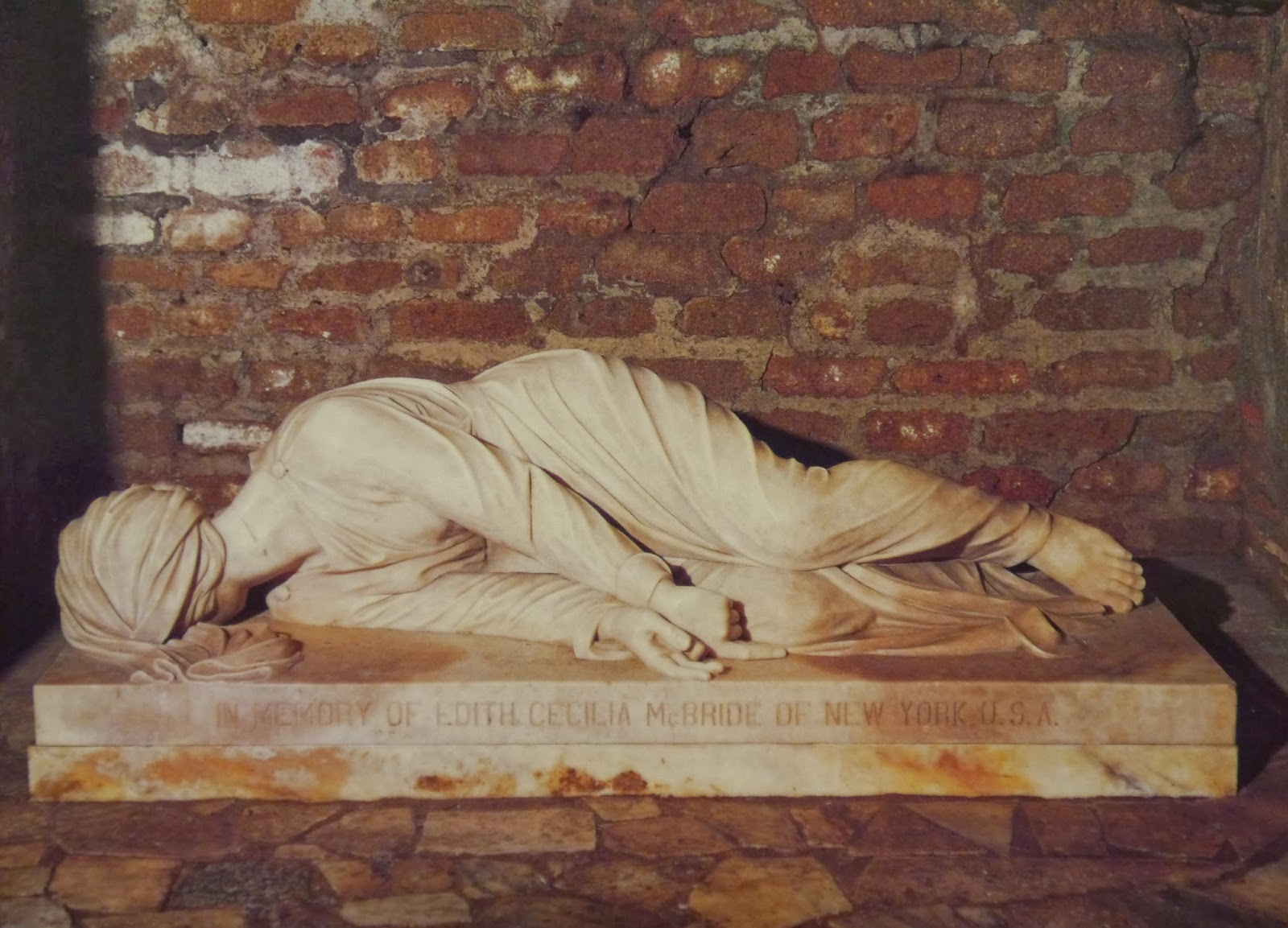 |
| Saint Cecilia - Stefano Maderno, 1599-1600 |
 |
| Frescoes in the Catacombs. Early 9th century. |
Deep underground in the Catacombs of Saint Callixtus is a space where Saint Cecilia’s body is said to have rested. The ancient man-made cave in which this space is located has been hollowed out and enlarged several times to accommodate all the pilgrims who wished to visit. The walls still have traces of ancient frescoes.
Saint Cecilia’s remains have long since been removed to her Basilica in Trastevere, but in the niche in the Catacombs is a replica of the sculpture of the saint by Stefano Maderno. The original was made in 1599-1600.
 |
| Copy of the Maderno sculpture in the catacombs of Saint Callixtus. |
Stefano Maderno is best known for the seemingly unposed, naturalistic recumbent marble of Santa Cecilia in the Church of Santa Cecilia in Trastevere (1599–1600). The sculpture was a counter-statement to the current dry and hectic complications of Mannerism, to which it confronted a simple sweeping outline and a stark pose. This is not a sanitized hagiographical representation of a saint, but the graphic representation of an uncorrupted corpse, claimed to be positioned just as it had been found. The saint's tomb had been opened in 1599, and Cardinal Paolo Emilio Sfondrato commissioned Maderno, aged 23 at the time, to recreate the martyr's body in marble.
 |
| Basilica of Saint Cecilia in Trastevere, Rome. |
The pavement in front of the statue encloses a marble slab with Maderno's sworn statement that he has recorded the body as he saw it when the tomb was opened in 1599. The statue depicts the three axe strokes described in the 5th-century account of her martyrdom. It also is meant to underscore the incorruptibility of her cadaver (an attribute of some saints), which miraculously still had congealed blood after centuries.
 |
| Hmmm.... |
"Behold the body of the most holy virgin, Cecilia, whom I myself saw lying uncorrupt in her tomb. I have in this marble expressed for thee the same saint in the very same posture and body."
The day that I visited Saint Cecilia’s Basilica in Trastevere, the Benedictine nuns were singing an afternoon service for Saint Martin’s Day (but he’s another story), their wavering and rather tuneless voices drifting up into the church rafters. Saint Cecilia is the patron saint of music, so 'm sure she'll appreciate the effort. BTW, this site suggests that "the origin of this seems to be found in the antiphon taken from her Acts: “As the musical instruments (at her wedding feast) were playing, Cecilia sung (in her heart) to the Lord, saying: ‘May my heart remain unsullied, so that I be not confounded’.”
The Basilica dates from the 5th century, rebuilt in 822. Tradition has it that it is built where Saint Cecilia lived, before her career took a nose-dive to martyrdom. She lived in Trastevere? Who would have thought?
 |
| St Martin's Day in the Basilica of Saint Cecilia, Trastevere. |
No comments:
Post a Comment